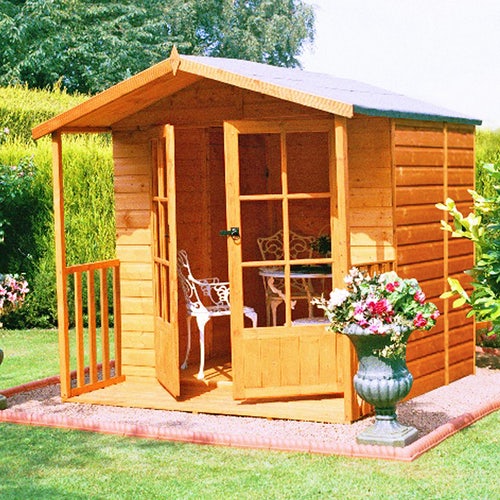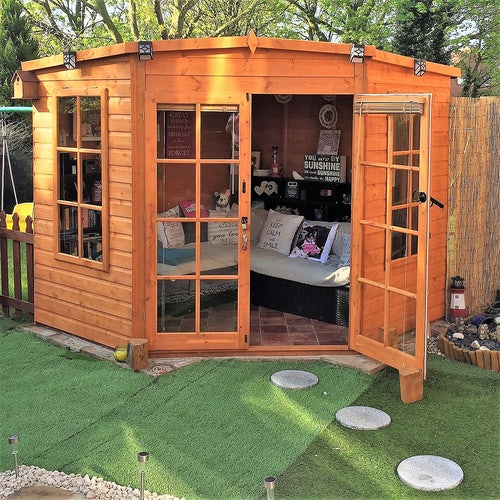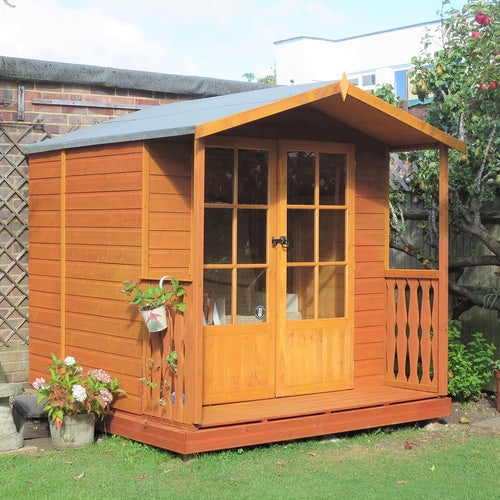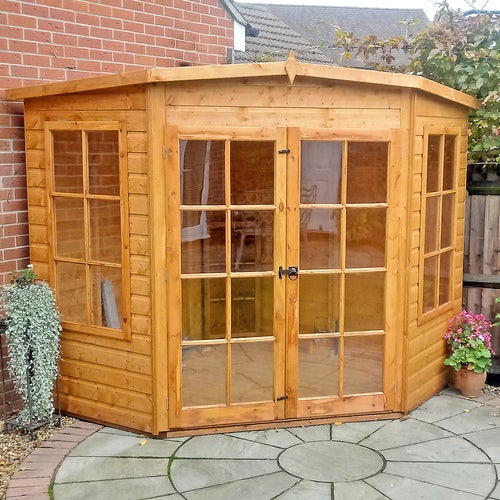If you want to use your summer house during the colder months, you’ll have to insulate it.
The good news is:
Insulating a summer house is a process that can be done successfully and in a few different ways.
To lend a hand, at Insulation Superstore we decided to put together an in-depth guide on how to insulate a summer house.
Let’s dive right in!
Table of contents:
- What is the best way to insulate a summer house?
- Should I insulate my summer house?
- What is the best insulation for a summer house?
- How do you insulate a summer house?
- The benefits of insulating a summer house
What is the best way to insulate a summer house?
Typically you can insulate a summer house in many different ways. Whether you choose internal or external insulation, you can benefit for either.
External summer house insulation
Installing insulation on the outside of a summer house can mean space can be saved within the interior. However, because it is outdoors you will need something to cover it. Preferably this might be a durable lining or timber which could increase the cost.
You could also add a wall of timber on the outside to increase the quality of thermal insulation. Then, following this, you could place a layer of weather-resistant weatherboard below for breathability.
Internal summer house insulation
Installing internal insulation in a summer house is considered easier and a more suitable solution when it comes to roofs. It can also be cheaper than exterior summer house insulation.

Should I insulate my summer house?
It is not a legal requirement to insulate your summer house. You can even use heaters or fans if you have electricity connecting to the structure. However, if you want a solution that can help maintain low energy costs then insulation is your best bet. By doing this you can also help out the environment by decreasing your carbon footprint.
If you perhaps don’t want a full insulation installation or perhaps costs are risky to your budget, consider double glazing.
Double-glazed windows are a popular solution for insulation. This is because they can be a simple addition with no hefty construction needed or extreme costs.
Furthermore, windows can allow you to have a view of the outdoors. So you won’t miss out on seeing nature.

What is the best insulation for a summer house?
Double glazing is the best for a simple solution. For the total impact of insulation on a home, you will need to insulate the floors, roof and walls.

How do you insulate a summer house?
First of all, you will need to make sure the summer house has no gaps. If it does, use a weatherproof and moisture-resistant sealant to close these. Once any gaps have been filled, choose an insulation material like glass wool or insulation.
Once you have chosen your summer house insulation, you will need to confirm the installation process. Though typically insulation should go between structural frames of the summer house; preferably to the summer house’s floor, walls and roof.
It’s also worth noting that foil-lined insulation and rigid insulation require more ventilation. Glass fibre wool requires less ventilation. An easy solution to figuring out how much insulation material you need is to use a tape measure to measure each space you plan to cover.
Once the insulation has been added, you can hide the insulation from view for a cleaner appearance. This is done by fitting panelling and/or wallboards to the inside of your shed which could be done not only in the form of plywood but also in the following:
- Plasterboard
- Hardboard
- Tongue and groove
Here are brief steps to help you understand how plywood is installed:
Step one: Drill pilot holes
Drill 4mm pilot holes through each wall board, making sure they’re lined up with the shed’s timber structure.
Step two: Fix screws
Using a screwdriver bit and drill, put these together and fix the screws into your board at the shed joists.
Step three: Prepare for painting
To ensure you have a cleaner-looking appearance, it is advised you paint following the installation of your insulation and its covering. Typically, this will include placing down coverings to protect areas around the painting space you don’t want to get covered in paint splashes. So make sure to do this before step four.
Step four: Apply paint primer
Apply a thin layer of paint primer to every part of the area you plan to paint and leave it to dry. Check manufacturer instructions as drying times can vary.
Step five: Paint application
Once the paint primer has dried, you can apply your paint accordingly. Multiple coats may be required for a stronger colour and to avoid a translucent appearance, but make sure the layers of paint prior are dry before adding more.
Plywood is a strong material, so it cannot only help with the protection of the insulation but also help secure it in place for the long term.

The benefits of insulating a summer house
Insulating a summer house offers several benefits.
Firstly, it helps regulate the temperature inside, keeping it cooler in hot weather and warmer during cooler seasons, thereby enhancing comfort.
Secondly, insulation prevents the escape of conditioned air, leading to reduced energy consumption and lower utility bills.
What’s more:
Insulation can also help to minimise moisture buildup, preventing issues such as mould and mildew, thus prolonging the lifespan of the summer house.
The best part? Now that you know how to insulate a summer house, you’re well prepared to take on this exciting DIY project.
For more information about other insulation solutions, check out our help and advice guides. You can also give us a call using our helpline or open the chat box in the bottom right for further support.









